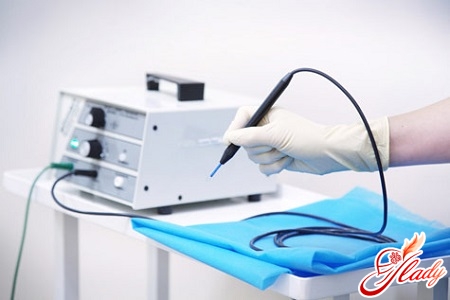
Cervical erosion is diagnosed almost everywhereevery woman. This disease requires special attention. Failure to treat erosion can have a negative impact on health. Over time, it can transform into oncology. Remember, cervical erosion in women who have not given birth is as common as in women who have given birth.
The process of erosion formation
This disease is associated with defects of the cervix.The cervical mucosa is covered from the outside with several layers of epithelium (three). The third layer performs a protective function. Defects in the form of wounds, ulcers, cracks in the mucous membrane lead to formations in the form of cervical erosion. Initially, the healing process occurs. As a result, the cells of the third protective layer are not restored, but are replaced by cells that line the inside of the cervix. As a result, the wound is overgrown with a completely different tissue that does not perform a protective function. These cells begin to grow, due to the fact that they are in the wrong microflora and are exposed to intense acidic environment. As a result, cervical erosion increases in size. The symptoms of this disease do not allow a person to diagnose it on their own. This is due to the fact that this disease occurs in most cases without obvious symptoms. That is, there are no painful sensations, the temperature does not rise, the woman's well-being remains at the same level. In rare cases, bloody discharge and pain in the abdomen may appear after intercourse. This disease occurs in the same way in both women who have given birth and women who have not. What influences the formation of cervical erosion:
- Infections (trichomoniasis, papilloma, chlamydia, mycoplasmosis, genital herpes and type 2, gonorrhea). They are transmitted during sexual intercourse without proper protection.
- Inflammation of the genitals. This is thrush and bacterial vaginosis.
- Damage to the cervix is mechanical. Appear after abortion, gross sexual contacts and childbirth.
- Early sexual activity.
- A lot of sexual partners.
- Decreased immunity.
- Malfunctions of the cycle of menstruation and a hormonal disorder.

Erosion diagnostics
A gynecologist can detect cervical erosion.During the examination, he may additionally use the colposcopy method. It involves using equipment that can magnify the image. After completing the examination, the doctor will send you for tests to find out the reason why the erosion appeared:
Once the diagnosis is confirmed, it is advisableconduct a number of additional tests. They will help to understand what kind of neoplasm it is (benign or malignant). For this purpose, a cytological study is conducted (reveals malignant cells) and a biopsy (a small section of the cervix is cut off for examination under a microscope). This information will help the doctor choose the direction in which the erosion treatment will take place.
Choose how to treat erosion
Various methods are used in the treatment of erosion.The most common method is diathermocoagulation. It is based on cauterization of the cervical area with electric current. This leaves scars. Therefore, it is unacceptable in the treatment of cervical erosion in women who have not given birth and for those who want to become a mother in the near future. An alternative to the previous method is cauterization of erosion with nitrogen. The affected area is frozen. The cellular structure of the erosion is destroyed. The result of this procedure is the absence of a scar. After treatment, it is better to be monitored by a doctor, as complications may arise. Treatment of erosion in women who have not given birth should be carried out using methods that are capable of leaving no traces (scars). These include:
- Chemical coagulation - non-surgicalintervention, used when benign erosion occurs. It is performed by treating the cervix with preparations that can corrode abnormal cells. This method does not leave scars. The disadvantage is the possibility of relapse. The healing process takes 1-2 months.
- Laser removal. Treatment of cervical erosion by this method is most effective. The laser makes the cut with high accuracy. That allows you to keep healthy tissue. Subsequently, the wound heals without scarring. Complete healing begins approximately in 1 month.
- Treatment of erosion using radio waves. In this method, radio waves affect the cells of the tissue in such a way that they begin to release heat. Due to this, the fabric is not cut, but is melted. At that moment, the vessels are sealed. This, in turn, reduces blood loss and reduces the risk of infections. Subsequently, there are no scars. Healing occurs within 1 month.
Such measures are applicable in the treatment of erosioncervix. A doctor will help you choose the right treatment method. He will weigh all the pros and cons and select the best option for you. Take responsibility for your health. Regular visits to the doctor will prevent negative consequences in the event of erosion. An important point is that this formation can turn into oncology at any time. So be attentive not only to others, but also to yourself.









